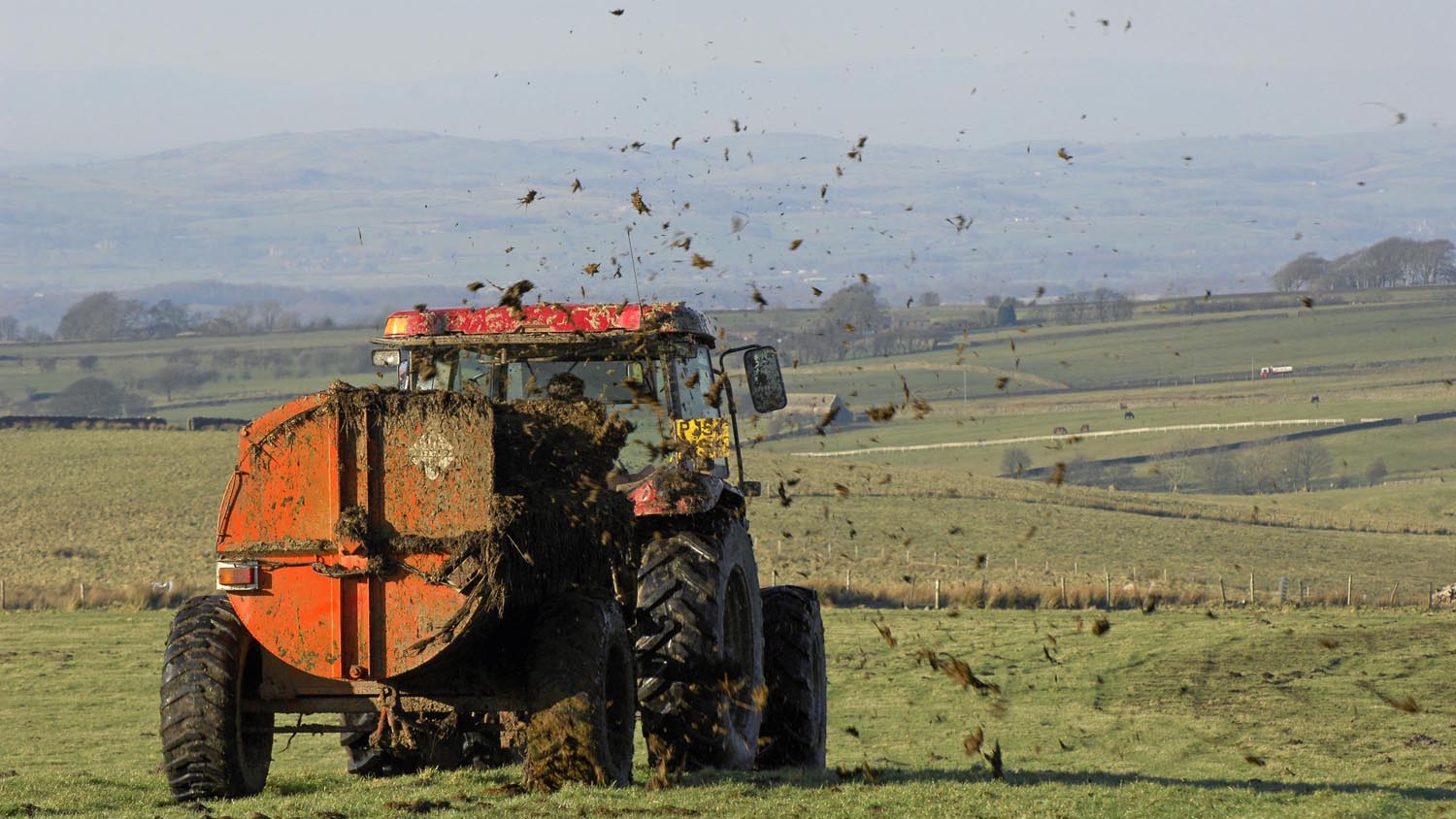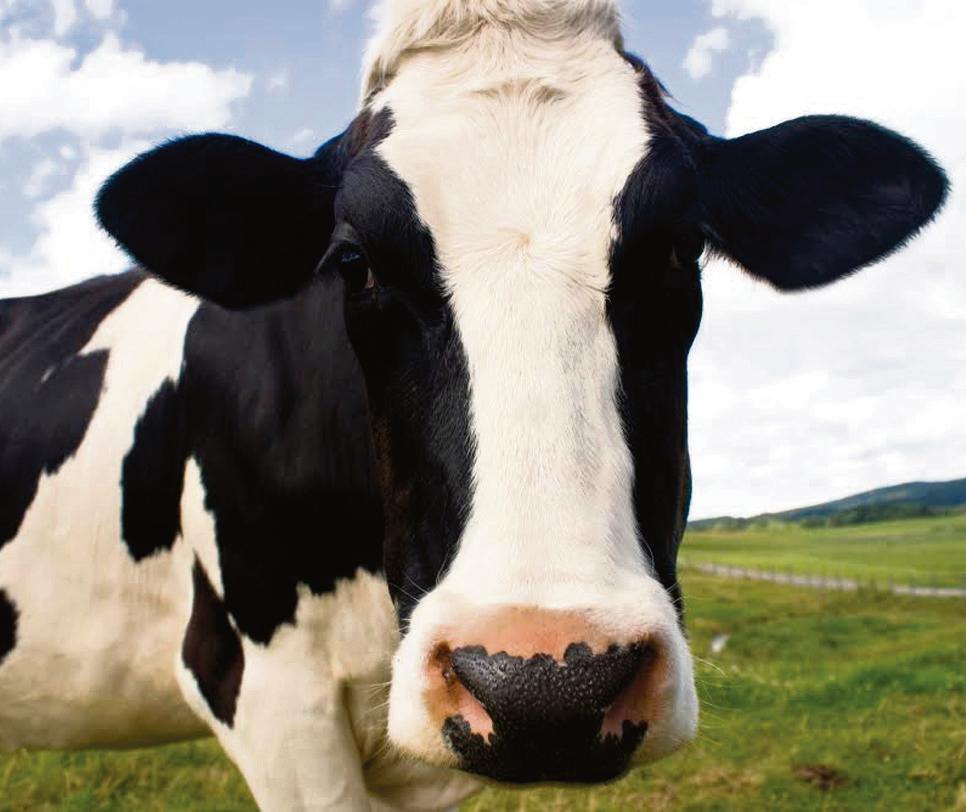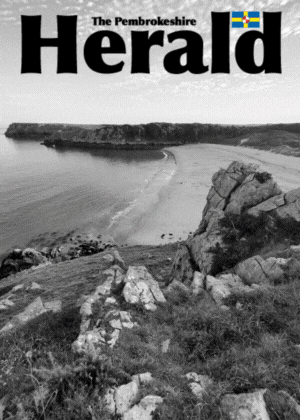Farming
NFU proposes alternative to NVZ plan

NFU CYMRU has urged Welsh Government to consider a ‘workable alternative’ to reducing nitrates from agriculture to prevent further extension of Nitrate Vulnerable Zones (NVZs) in Wales.
The Union has written to the Cabinet Secretary for Environment and Rural Affairs, Lesley Griffiths AM, to reiterate earlier commitments to provide the resources required to support the development of such a solution as an alternative to NVZ proposals that could see the percentage of NVZs in Wales rise from 2.4% to 8% – or even a leap to an all territory approach covering the whole of Wales.
The Cabinet Secretary is expected to make an announcement on the NVZ designations before the end of 2017.
The new option put forward by NFU Cymru has been designed by farmers and builds on an off-set scheme that has been operating successfully by a group of First Milk dairy farmers in the Cleddau Catchment in Pembrokeshire. The approach requires farmers to select mitigating measures appropriate to their system. The scheme is recorded, audited by Natural Resources Wales (NRW) and meets the strict requirements of the Environmental Permitting and Habitats Regulations – on average each participating farm is saving a tonne of nutrient annually.
This model has significant potential to be developed and could deliver measurable reductions in nitrates, well above those modelled for the NVZ Action Programme, as well as broader environmental benefits.
Speaking ahead of the Welsh Dairy Show in Carmarthen, NFU Cymru President Stephen James said: “We are clear that any new designations will have a significant impact upon the businesses of farmers and, severely hit the rural economy of these areas. The costs associated with implementation vastly outweigh the benefits to water quality. Farmers do, however, recognise their role in improving water quality and have developed a workable solution that has the potential to deliver far more than can be achieved through the NVZ Action Programme.
“The measures suggested with this approach address diffuse pollution issues and also provide habitat improvement. Developed in partnership, we believe they are likely to engender the confidence and ‘buy-in’ of the farming community – our own survey work shows significant willing from Welsh farmers to address the issue of nitrate pollution and improve water quality.
“This proposal is a workable alternative to the options currently on the table and delivers farmer-led solutions that bring environmental benefits – something that all parties share a vested interest in achieving; also aligning with Wales’ new legislative framework which presents opportunities and the flexibility to move forward and make progress on water quality issues on a different basis than previously.
“An alternative approach, rather than an unwieldly EU directive, will enable us to develop, grow and realise NFU Cymru’s vision of a productive, progressive and profitable industry that will deliver jobs, growth and investment for Wales and we have extended an offer to the Cabinet Secretary to join us on a visit to farms in West Wales to see the benefits of this approach for herself.”
WHAT IS AN NVZ?
An NVZ designation places a series of restrictions on farmers’ ability to use certain types of fertiliser on their land at prescribed times of the year. The aim is to reduce the effect that run off from agricultural land has on the environment.
The effects of nitrate pollution on the aquatic environment can be significant. High nitrate concentrations can cause a deterioration in water quality and disturb the ecosystems of rivers and other watercourses. Over enrichment of water can lead to a depletion of oxygen levels leading to a loss of marine life and causes increased toxic and non-toxic algal blooms, which make the situation worse by reducing water transparency. Nitrate pollution can reduce not only the diversity of plant life but also damage fish and shellfish stocks, as the algae consume the available oxygen suffocating other life.
In the worst case scenario, anaerobic (oxygen-starved) conditions cause toxic bacteria to thrive and can create ‘dead zones’.
In order to tackle the threat posed by nitrate pollution, in 1991 the European Union adopted rules governing nitrate pollution and sought to regulate the extent of nitrate pollution entering the environment.
WG APPROACH LACKS EVIDENCE
FUW Senior Policy Officer Dr Hazel Wright, who has been representing the Union in the review process, said: ‘‘The FUW has been involved in the NVZ review and has made successful representations on several designations, which resulted in their removal from the discrete areas option of the consultation.
“However, the number of proposed new designations remain a concern and the FUW continues to reiterate the operational and financial impacts those designations would have upon farms that reside within an NVZ area. Given such costs, there must be full justification for any proposed increases in designation.”
Two options outlined in the consultation include the continuation of the discrete approach to designation or the designation of the whole of Wales as a NVZ. A continuation of the discrete approach would see an increase in the amount of NVZ designations in Wales rise from 2.4% to 8%. This would mean significant changes to NVZ designation in counties such as Pembrokeshire, Carmarthen and Anglesey.
“The FUW remains resolutely against the option to apply the action programme throughout the whole of Wales as this would require all landowners to comply with the NVZ action programme measures.
“There is a distinct lack of evidence for a whole territory approach and the difficulties and costs associated with regulatory compliance for farms whose land does not drain into nitrate polluted waters, makes this option both unwarranted and unreasonably excessive,” added Dr Wright.
Farming
Welsh Conservatives warn climate plans could mean fewer livestock on Welsh farms

THE WELSH CONSERVATIVES have challenged the Welsh Government over climate change policies they say could lead to reductions in livestock numbers across Wales, raising concerns about the future of Welsh farming.
The row follows the Welsh Government’s decision, alongside Plaid Cymru and the Welsh Liberal Democrats, to support the UK Climate Change Committee’s Fourth Carbon Budget, which sets out the pathway towards Net Zero greenhouse gas emissions by 2050.
The Carbon Budget, produced by the independent Climate Change Committee (CCC), states that meeting Net Zero targets will require a reduction in agricultural emissions, including changes to land use and, in some scenarios, a reduction in livestock numbers.
During questioning in the Senedd, the Welsh Conservatives pressed the Deputy First Minister and Cabinet Secretary for Climate Change and Rural Affairs on whether the Welsh Government supports reducing livestock numbers as part of its climate strategy.
Speaking after the exchange, Welsh Conservative Shadow Cabinet Secretary for Rural Affairs, Samuel Kurtz MS, said the Welsh Government could not distance itself from the implications of the policy it had backed.
Mr Kurtz said: “By voting in favour of these climate change regulations, Labour, Plaid Cymru and the Liberal Democrats have signed up to the UK Climate Change Committee’s call to cut livestock numbers in Wales, and they cannot dodge that reality.
“The Deputy First Minister’s smoke-and-mirrors answers only confirm what farmers already fear: that Labour, along with their budget bedfellows in Plaid and the Lib Dems, are prepared to sacrifice Welsh agriculture in pursuit of climate targets.”
He added that the issue came at a time of growing pressure on the farming sector, pointing to uncertainty over the proposed Sustainable Farming Scheme, the ongoing failure to eradicate bovine TB, nitrogen pollution regulations under the Nitrate Vulnerable Zones (NVZs), and proposed changes to inheritance tax rules affecting family farms.
The Welsh Government has repeatedly said it does not have a target to forcibly reduce livestock numbers and has argued that future emissions reductions will come through a combination of improved farming practices, environmental land management, and changes in land use agreed with farmers.
Ministers have also said the Sustainable Farming Scheme, which is due to replace the Basic Payment Scheme, is intended to reward farmers for food production alongside environmental outcomes, rather than remove land from agriculture.
The UK Climate Change Committee, which advises governments across the UK, has stressed that its pathways are based on modelling rather than fixed quotas, and that devolved governments have flexibility in how targets are met.
However, farming unions and rural groups in Wales have warned that policies focused on emissions reduction risk undermining the viability of livestock farming, particularly in upland and marginal areas where alternatives to grazing are limited.
The debate highlights the growing tension between climate targets and food production in Wales, with livestock farming remaining a central part of the rural economy and Welsh cultural identity.
As discussions continue over the final shape of the Sustainable Farming Scheme and Wales’ long-term climate plans, pressure is mounting on the Welsh Government to reassure farmers that climate policy will not come at the expense of the sector’s survival.
Farming
FUW Insurance Services appoints Paul Jameson as non-executive director

Experienced insurance and risk specialist joins board as long-serving director retires
FUW INSURANCE SERVICS LTD, Wales’ leading specialist agricultural insurance broker, has announced the appointment of Dr Paul Jameson as a non-executive director.
Dr Jameson brings extensive experience in insurance and risk management, having worked as an actuary and senior executive within subsidiaries of major global insurers including Allianz, Munich Re, Legal & General and Wakam. He has held chief risk officer roles since 2020.
During his career, Dr Jameson has led multidisciplinary teams spanning actuarial services, risk management, compliance, audit, legal and marketing approvals, giving him broad experience in both strategic oversight and operational governance.
Speaking following his appointment, Dr Jameson, who lives in Colwyn Bay, North Wales, said he was looking forward to supporting the farming sector in Wales.
He said: “I am delighted to join FUW Insurance Services and would like to thank Ann, Guto and the rest of the team for their warm welcome.
“I have been impressed by the passion and commitment of the board to the farming community, and by its ambition to grow and diversify the insurance business. I am keen to support the farming profession and help ensure the continued success of the sector in Wales, particularly during periods of economic and geopolitical uncertainty.
“I hope my experience in the insurance sector will help the business build on its successes and continue to grow, especially as it explores new commercial opportunities and innovative avenues for expansion.”
Ann Beynon OBE, chair of the FUW Insurance Services board, said Dr Jameson’s expertise would be a significant asset to the organisation.
She said: “We are delighted to welcome Dr Paul Jameson to the board. His depth of experience in insurance and his understanding of risk management will be invaluable as we continue to develop and diversify our services.
“Paul’s insight and strategic perspective will help us navigate a changing insurance market, identify new opportunities for innovation and growth, and strengthen the services we provide to our customers.”
Dr Jameson’s appointment follows the retirement of Ken Isherwood, who has stepped down from the board after more than a decade of service.
Paying tribute, Ann Beynon said: “Ken’s integrity, wisdom and deep knowledge of the insurance industry have underpinned much of our success.
“It has been a privilege to work alongside him, and we wish him every happiness in his well-earned retirement.”
Community
Badger Trust launches manifesto ahead of 2026 Senedd elections

THE BADGER TRUST has published a new Cymru Badger Manifesto calling on candidates standing in the 2026 Senedd elections to commit to a science-led approach to bovine tuberculosis (bTB) and to maintain Wales’ current policy of not culling badgers.
The manifesto, released on Wednesday (Dec 10) as part of the charity’s Badgers Belong Here / Mae Moch Daear yn Perthyn Yma campaign, sets out the organisation’s position on badger protection, wildlife crime and bTB control, and urges politicians to reject calls for the reintroduction of culling in Wales.
Badger Trust argues that political decisions taken during the next Senedd term will be critical to the future of badgers, which it describes as culturally and ecologically significant to Wales. The charity says badgers have been present in Wales for more than 250,000 years and remain part of Welsh folklore, place names and rural identity.
Five key commitments
The manifesto outlines five commitments the charity is asking Senedd candidates to support, including defending what it describes as science-led policy on bTB, challenging misinformation in public debate, strengthening enforcement against wildlife crime, recognising badgers as part of Welsh heritage, and supporting local volunteer badger groups.
According to Badger Trust, 140 incidents of badger-related wildlife crime have been recorded in Wales since 2020, which it says highlights the need for improved reporting and enforcement.
The charity also points to the work of six active badger groups across Wales, which it says assist with rescuing injured animals, monitoring setts, recording road casualties and supporting local authorities.
bTB policy in Wales and England
Wales has not carried out widespread badger culling as part of its bTB control strategy, instead focusing on cattle testing, biosecurity measures and herd management.
Badger Trust claims that new herd incidents of bTB in Wales fell by more than 40% between 2010 and 2024, which it attributes to cattle-based controls rather than wildlife intervention.
The charity contrasts this with England, where it says almost 250,000 badgers have been culled over the past decade as part of bTB control programmes. It argues that bTB rates in England remain higher than in Wales and that the evidence does not show culling alone to be responsible for reductions in disease.
Disputed claims over culling
The manifesto challenges the frequently cited claim that badger culling in England led to a 56% reduction in bTB in cattle. Badger Trust says this figure has been misinterpreted and that studies cited in support of culling also involved additional measures such as enhanced cattle testing and biosecurity.
The charity points to statements from researchers and official correspondence which, it says, indicate that reductions in bTB cannot be attributed solely to culling.
Supporters of culling, including some farming groups, continue to argue that wildlife control should remain an option as part of a wider disease management strategy, particularly in areas with persistent infection. The Welsh Government has previously said it keeps its bTB policy under review in line with emerging evidence.
Call to candidates
Nigel Palmer, CEO of Badger Trust, said Wales demonstrated that bTB could be tackled without killing wildlife.
He said: “Wales is a world-leading example of how to address bovine TB through evidence-based policy. The progress made here shows that culling is not necessary, and we urge Senedd candidates to stand by the science.”
The manifesto is available in both Welsh and English and will be circulated to political parties and candidates ahead of the 2026 election.
-

 Crime2 days ago
Crime2 days agoMilford Haven man jailed after drunken attack on partner and police officers
-

 News5 days ago
News5 days agoDyfed-Powys Police launch major investigation after triple fatal crash
-

 Crime2 days ago
Crime2 days agoTeenager charged following rape allegation at Saundersfoot nightclub
-

 Crime3 days ago
Crime3 days agoMan charged with months of coercive control and assaults
-

 Crime4 days ago
Crime4 days agoMan sent to Crown Court over historic indecent assault allegations
-

 Crime6 days ago
Crime6 days agoMan spared jail after baseball bat incident in Milford Haven
-

 Crime4 days ago
Crime4 days agoMilford Haven man admits multiple offences after A477 incident
-

 Crime3 days ago
Crime3 days agoWoman ‘terrified in own home’ after ex breaches court order






















